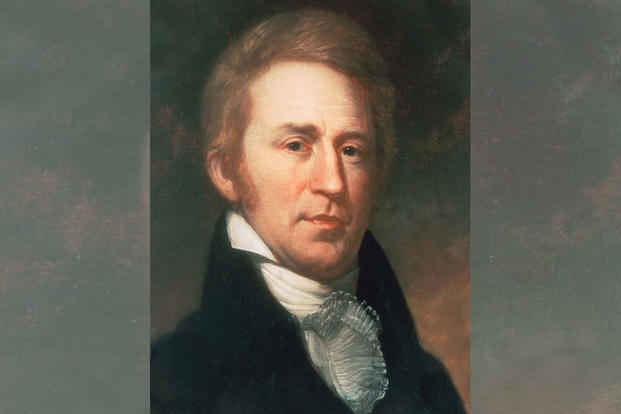When the Corps of Discovery arrived in St. Louis on Sept. 23, 1806, Lt. William Clark recorded that they "received a harty welcom from it's inhabitants." Small wonder, since few had expected the tired, tattered band to return from their great expedition across the Louisiana Purchase. Clark, Meriwether Lewis and their subordinates had covered 8,000 miles in two years, four months and nine days.
Throughout the journey, Clark had acted as record keeper and mapmaker for the group, charting their course over the Continental Divide, the breadth of which removed President Thomas Jefferson's belief that the Missouri and Columbia river systems were connected. Clark's cartographic abilities had been forged during his years of frontier experience. His wealthy Virginia family had relocated to Kentucky when Clark was 14, and as the youngest brother of Jonathan and George Clark, heroes of the American Revolution's western battles, he saw early the potential of America's wilderness.
In 1789, Clark fought Indians with Col. John Hardin. In 1790, he served as an emissary to the Creek and Cherokee nations. In 1791, he was an ensign/acting lieutenant under Gens. Scott and Wilkinson against the Indians on the Wabash. In 1793, the resourceful young officer was commissioned a first lieutenant under Gen. Anthony Wayne and took part in the Battle of Fallen Timbers, destroying the power of the Indians in Ohio. During this period, he met and befriended Lewis.
Lewis asked Clark to join him as co-leader of a government-sponsored expedition to the Pacific Ocean in June 1803. Although Clark was officially given the lower rank of lieutenant to Lewis' of captain, the men divided responsibilities and acclaim equally to the end. Their success, including Clark's invaluable map of the terrain covered, led to his fame and influence in the years to come.
For the remainder of his life, Clark played a series of key roles in his young nation -- as a federal agent to the American Indians, governor of the Missouri Territory and superintendent of Indian Affairs. On his death in 1838, Clark had won a deserved reputation for fairness, honesty and knowledge of his beloved West.
Want to Know More About the Military?
Be sure to get the latest news about the U.S. military, as well as critical info about how to join and all the benefits of service. Subscribe to Military.com and receive customized updates delivered straight to your inbox.















